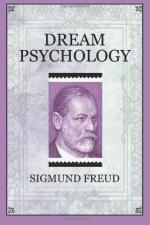Towards the explanation of this statement, which is no theoretical postulate, it must be remembered that no other class of instincts has required so vast a suppression at the behest of civilization as the sexual, whilst their mastery by the highest psychical processes are in most persons soonest of all relinquished. Since we have learnt to understand infantile sexuality, often so vague in its expression, so invariably overlooked and misunderstood, we are justified in saying that nearly every civilized person has retained at some point or other the infantile type of sex life; thus we understand that repressed infantile sex desires furnish the most frequent and most powerful impulses for the formation of dreams.[1]
If the dream, which is the expression of some erotic desire, succeeds in making its manifest content appear innocently asexual, it is only possible in one way. The matter of these sexual presentations cannot be exhibited as such, but must be replaced by allusions, suggestions, and similar indirect means; differing from other cases of indirect presentation, those used in dreams must be deprived of direct understanding. The means of presentation which answer these requirements are commonly termed “symbols.” A special interest has been directed towards these, since it has been observed that the dreamers of the same language use the like symbols—indeed, that in certain cases community of symbol is greater than community of speech. Since the dreamers do not themselves know the meaning of the symbols they use, it remains a puzzle whence arises their relationship with what they replace and denote. The fact itself is undoubted, and becomes of importance for the technique of the interpretation of dreams, since by the aid of a knowledge of this symbolism it is possible to understand the meaning of the elements of a dream, or parts of a dream, occasionally even the whole dream itself, without having to question the dreamer as to his own ideas. We thus come near to the popular idea of an interpretation of dreams, and, on the other hand, possess again the technique of the ancients, among whom the interpretation of dreams was identical with their explanation through symbolism.
Though the study of dream symbolism is far removed from finality, we now possess a series of general statements and of particular observations which are quite certain. There are symbols which practically always have the same meaning: Emperor and Empress (King and Queen) always mean the parents; room, a woman[2], and so on. The sexes are represented by a great variety of symbols, many of which would be at first quite incomprehensible had not the clews to the meaning been often obtained through other channels.




